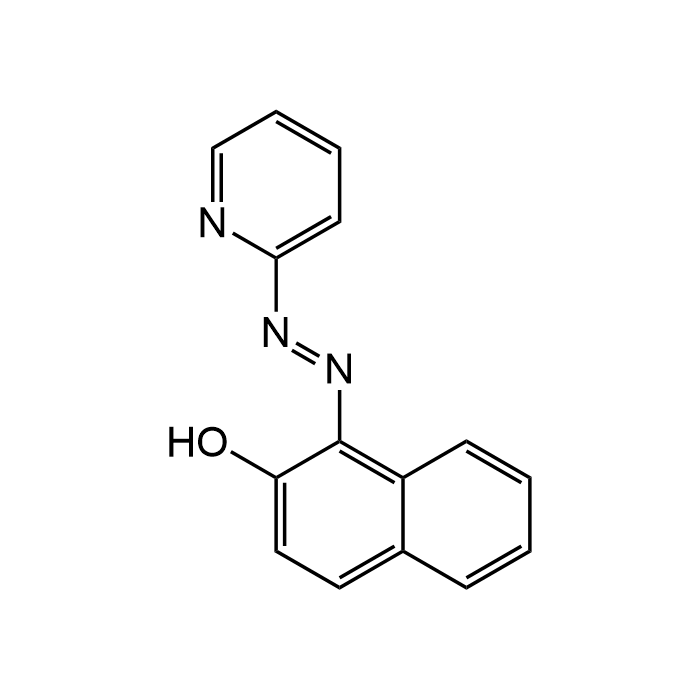Cookie Policy: This site uses cookies to improve your experience. You can find out more about our use of cookies in our Privacy Policy. By continuing to browse this site you agree to our use of cookies.
Chemodex
1-(2-Pyridylazo)-2-naphthol

| Product Details | |
|---|---|
| Synonyms | PAN; 2-(2-Hydroxy-1-naphthylazo)-pyridine |
| Product Type | Chemical |
| Properties | |
| Formula | C15H11N3O |
| MW | 249.27 |
| CAS | 85-85-8 |
| Source/Host Chemicals | Synthetic |
| Purity Chemicals | ≥99% (UV) |
| Appearance | Red-brown powder. |
| Solubility | Soluble in methanol or ethanol (1mg/ml). Insoluble in water. |
| Declaration | Manufactured by Chemodex. |
| Other Product Data |
Click here for Original Manufacturer Product Datasheet |
| InChi Key | LLYOXZQVOKALCD-ISLYRVAYSA-N |
| Smiles | OC1=CC=C(C=CC=C2)C2=C1/N=N/C3=CC=CC=N3 |
| Shipping and Handling | |
| Shipping | AMBIENT |
| Short Term Storage | +20°C |
| Long Term Storage | +20°C |
| Handling Advice | Protect from light and moisture. |
| Use/Stability | Stable for at least 2 years after receipt when stored at RT. |
| Documents | |
| Product Specification Sheet | |
| Datasheet |
 Download PDF Download PDF |
1-(2-Pyridylazo)-2-naphthol is widely used as an indicator for complexometry. It is used as a reagent for the extraction and spectrophotometric determination (for colorimetric analysis) of many transition metal elements like arsenic, chromium, cobalt, copper, cadmium, manganese, zinc and zirconium. It is also used for the analysis of uranium and thorium in solutions. 1-(2-Pyridylazo)-2-naphthol is also commonly used as an acid-base indicator. This reagent is slightly soluble in acidic solutions and soluble in alkaline solutions. The aqueous solution is yellow at pH12.
(1) K.L. Cheng & R.H. Bray; Anal. Chem. 27, 782 (1955) | (2) S. Shibata; Anal. Chim. Acta 25, 348 (1961) | (3) F.H. Pollard, et al.; Talanta 13, 725 (1966) | (4) A. Galik; Talanta 16, 201 (1969) | (5) L.E. Ross, et al.; Talanta 16, 748 (1969) | (6) J.K. Terlouw & J.J. De Ridder; Talanta 17, 891 (1970) | (7) H. Watanabe; Talanta 21, 295 (1974) | (8) K.A. Rao & B. Rangamannar; Radioisotopes. 32, 623 (1983) | (8) J. Gao, et al.; Talanta 40, 195 (1993) | (10) Z. Safari, et al.; Spectrochim. Acta A Mol. Biomol. Spectrosc. 78, 1606 (2011) | (11) L. Szabo, et al.; Spectrochim. Acta A Mol. Biomol. Spectrosc. 93, 266 (2012) | (12) M.A. Laskar, et al.; Crit. Rev. Anal. Chem. 46, 413 (2016) (Review)





